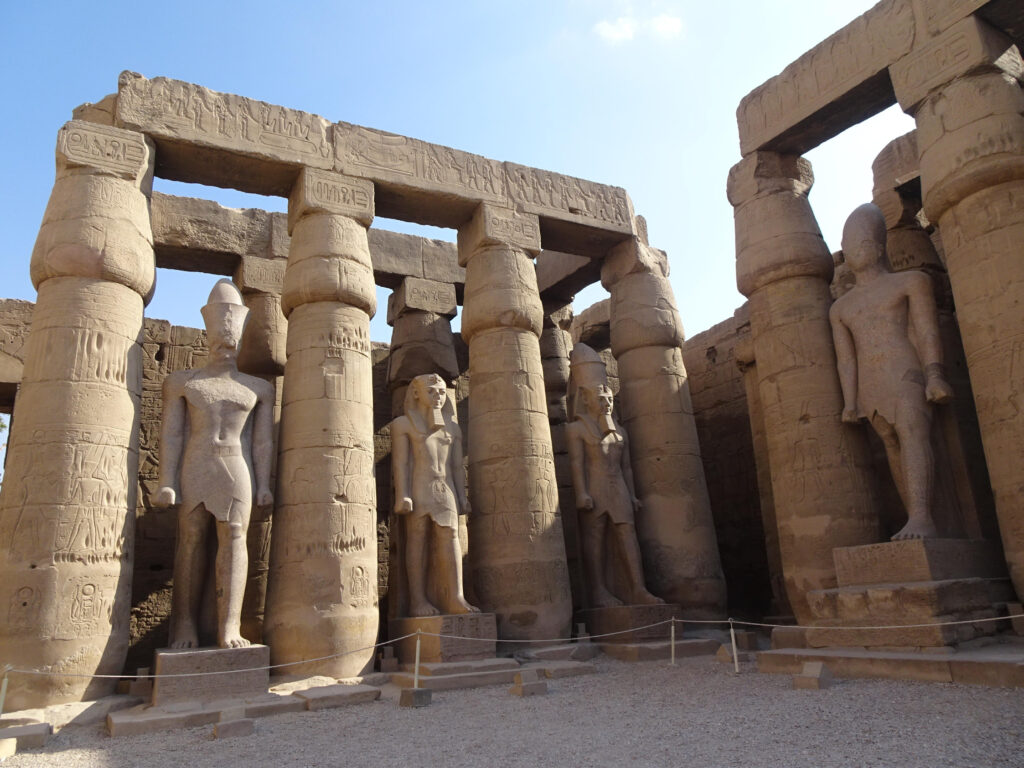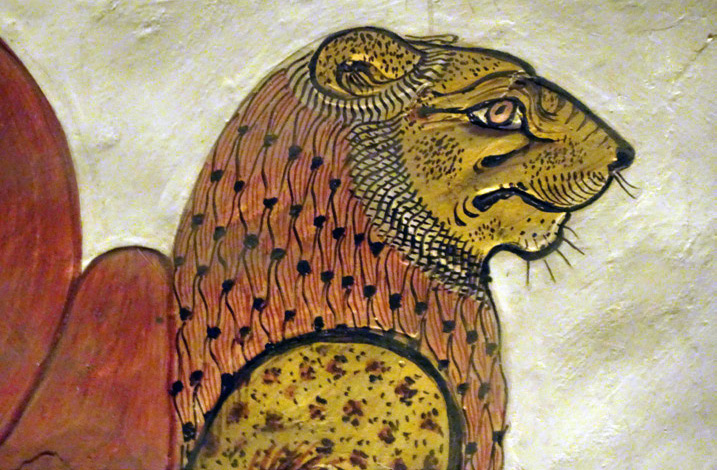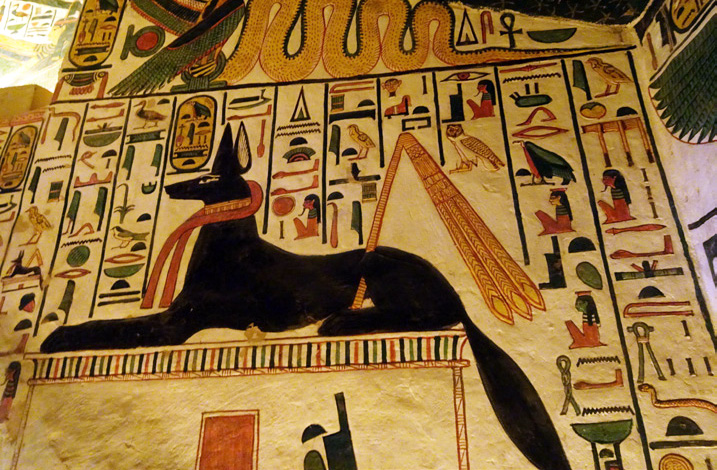
I’m a bit obsessive when it comes to visiting museums, although I always feel when leaving each one that I haven’t retained nearly as much as I would have liked. Fortunately, most museums allow photographs, so that helps.
In Cairo in February we visited five museums with different foci: The Coptic Museum (Christian art); Museum of Islamic Arts; Gayer-Anderson Museum (two medieval houses joined together long ago, with beautiful furnishings); The Khalil Museum (French Impressionists); and The Museum of Egyptian Antiquities, which retains the Tutankhamun Exhibit (no photos permitted). Some of the major works have been moved to the new Grand Egyptian Museum under construction in Giza, near the pyramids. Unfortunately, the opening keeps getting postponed and we were unable to visit. But much of the best art in Egypt remains in the tombs and temples in Upper Egypt, especially around Luxor, but also in Aswan and Abu Simbel. Thus, as I wrote recently about Roman and other ruins being the equivalent of museums, I think the tombs and temples also comprise the same. (Upper Egypt is in the south because the Nile flows north, and gradually downhill.)
Although the tombs and temples are replete with images of Egyptian Gods, it was, of course, the pharaohs who built them, not the gods themselves. This may seem obvious, but the pharaohs built temples and statues of themselves that imbued their images with god-like features —for instance the huge size of many of the statues; their faces often replaced with the faces of gods; and wearing the crowns of gods. In Abu Simbel, for example, there are two temples, including one of the most magnificent monuments, not only in Egypt, but I think, in all the world–the Temple of the Pharaoh Rameses II, which is 108’ high. Sitting outside are four statues of Rameses; he wasn’t bashful. Inside, in the deepest depths of the tomb, are four more statues, much smaller, one of which is also Rameses. Twice a year, on his birthday and the anniversary of his ascending the throne, the sun lights up the three with crowns for a few seconds. The fourth, Osiris, god of the underworld, never gets lit—all of this thanks to brilliant engineering.

From her tomb in Luxor
Rameses II, 19th Dynasty, was Pharaoh from 1279-1213 BC, so what we saw was constructed more than 3,000 years ago. (Other temples were much older. The first dynasty dates to ca. 3000 BC.) In 1963 however, just before it would have been flooded as a result of the construction of the Aswan High Dam, the entire temple was taken apart and moved to higher ground. It was during the same period that the Temple of Dendur was rescued from the new Lake Nasser (largest man-made lake in the world) and moved to the Metropolitan Museum of Art, owing to a large financial donation from the U.S. Government; many similar deals were made with other countries.
As with all of the extant ancient temples, the interior contains abundant extraordinary works of art, including many additional statues, beautifully decorated pillars and ceilings, and walls covered with hieroglyphics. It is believed that Rameses chose the location to pacify the region, which was mostly inhabited by Nubians, and also to demarcate Egypt’s southern border. Next to it is the Temple of Hathor, goddess of fertility, which is dedicated to Queen Nefertari (not Nefertiti).
The goddess Hathor gave birth to the sun every day. The dual purpose of the temple, and its juxtaposition next to the Temple of Rameses II, can lead to confusion. One needs a scorecard (or guidebook) to know which temples are to gods and which to god-like human beings: all of the pharaohs were attributed god-like powers, and all of their temples abound with images of gods.

Tombs, on the other hand, also covered with images of gods, are all dedicated to people—the people, generally pharaohs, who were buried inside them–so the purpose is clearer. (There are groups of Temples of Nobles other than pharaohs in both Luxor and Aswan.) Another element of confusion is the redundancy—there are several temples dedicated to Rameses II as well as to Hathor, but not every temple to Hathor is also dedicated to Nefertari. The tomb of Rameses II is all but lost to the flooding of the Nile, but the tomb of Nefertari has been restored and is extraordinarily gorgeous—and not far from the tombs of Rameses III and Sety I.
All three are *** in our Michelin Green Guide. All three are in the Valley of the Queens on the west bank of the Nile, opposite the city of Luxor. The tomb of Tutankhamun is also there, but thanks to Howard Carter, who famously discovered the buried tomb in 1922, everything has been removed except his body, so tourists are not encouraged to visit.
All G&S readers are at least somewhat familiar with Egyptian art; it’s impossible to avoid it. Having grown up a mile from the Brooklyn Museum of Art, which has a particularly excellent Egyptian collection, I began seeing sarcophagi and other Egyptian works as a child. But seeing pharaohs and gods face to face, as
it were, inside Egyptian tombs and temples, is a different experience. We were overwhelmed by the beauty and complexity of what we saw, as well as the skills of the ancient artists who completed the works.
Think of it: each tomb and temple had to be conceived and described, presumably initially by a pharaoh. Then architects—and there were architects 5000 years ago—had to create detailed plans. Next, each wall, indoors and out, many of them 100’ high or higher, had to be planned, including the choice of the gods to be depicted (with the pharaoh) and their precise appearance and juxtaposition.

Temples built by one pharaoh were often added to by other pharaohs, some of whom had their predecessors’ (parents’) names and images replaced with their own. Thus there are many temple complexes that grew over the centuries, such as the Temples of Luxor and of Karnak, near each other on the east bank of the Nile in the heart of Luxor, and the two largest in Egypt. Each of the pharaohs’ tombs, though, dug across the river, were dedicated to one particular pharaoh, with enormous efforts toward hiding them to protect them from thieves.
Otherwise grave robbers might break in and remove the worldly goods buried with the pharaohs that were there to enable them to ascend to heaven, well clothed and fed. While that occurred many times over the eons, another tragedy was the invasion of European archeologists who filled their museums with what was essentially stolen treasures.
Very sadly, centuries later, Christians, under orders of the Emperor Constantine and others, destroyed myriad faces of the pagans, just as later groups defiled the faces of Roman gods on their statues. (That may help explain why so many marble statues of Roman gods lack noses.)
Our Cairo guide told us that the pharaohs did not use slaves to build the pyramids, tombs or temples. However, we felt that was perhaps somewhat an apology in defense of Egypt’s history, since the masses of workers were fed, clothed and housed for years during the construction of the enormous works, and probably had no option of changing jobs. The pharaohs taxed the peasants and farmers to feed the artisans. It does not appear that money changed hands, although we saw ancient Egyptian coins in more than one museum. In addition, our guides in Aswan and Luxor showed us images on the walls of tombs and temples of pharaohs leading groups of foreign captives with ropes around their necks; I assume they became slaves in Egypt.
Visiting the tombs and temples was an awesome experience unlike any other we have ever experienced in any other country. G&S





Leave a Comment